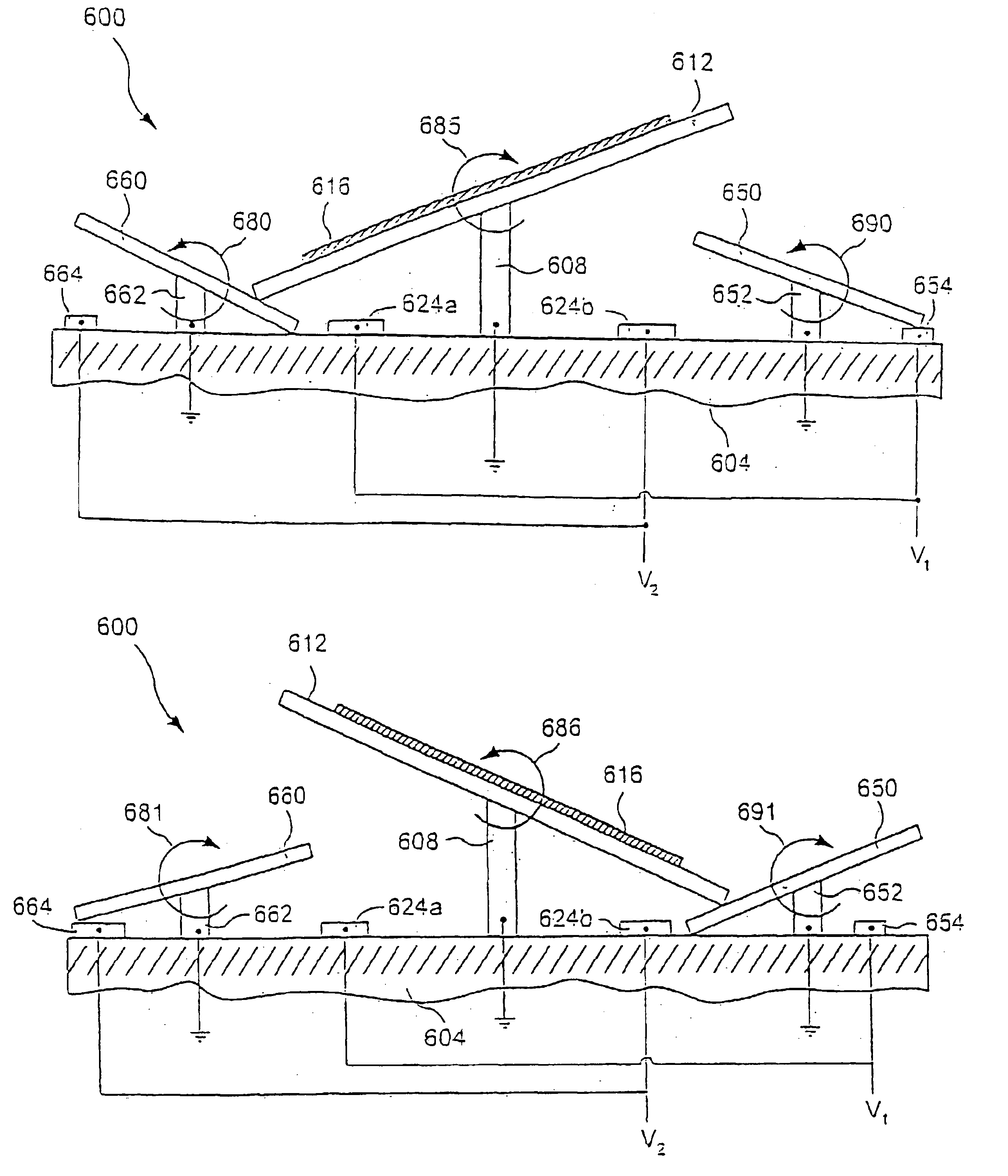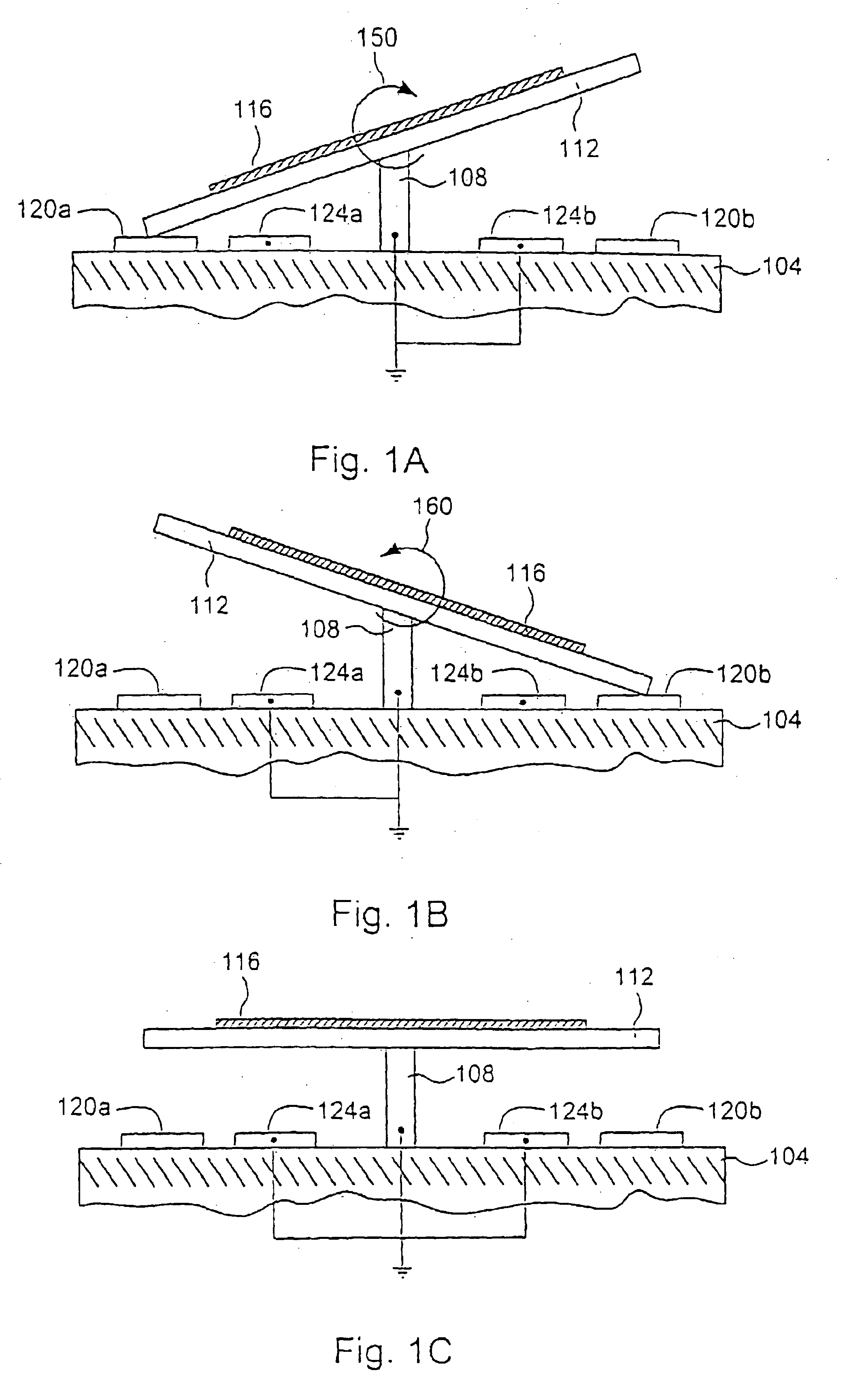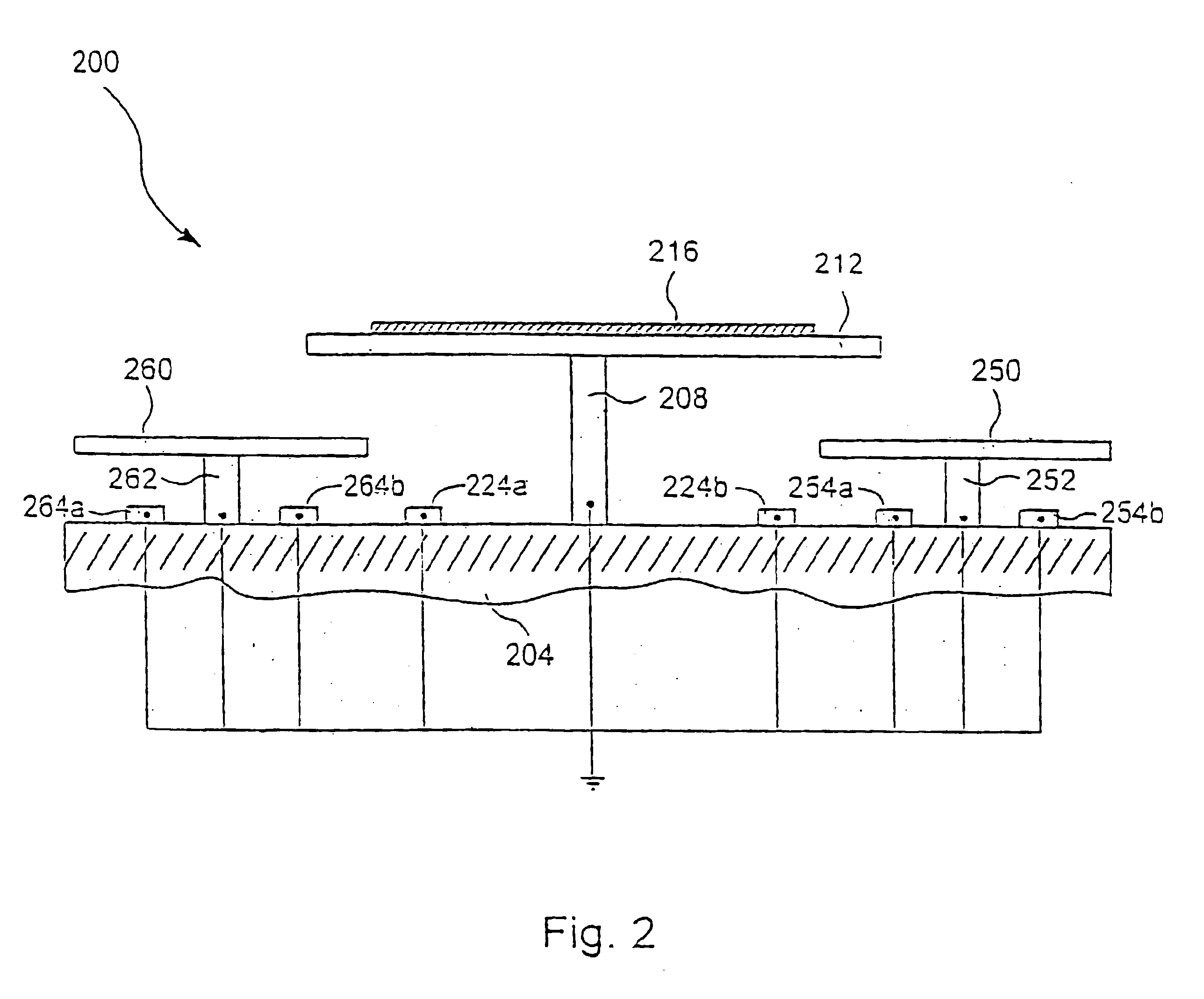Systems and methods for overcoming stiction using a lever
a technology of levers and levers, applied in the field of microelectricalmechanical systems, can solve the problems of complex compound process, difficult and expensive scaling of dwdm networks using sonet/sdh technology, and explosion of global bandwidth demand
- Summary
- Abstract
- Description
- Claims
- Application Information
AI Technical Summary
Benefits of technology
Problems solved by technology
Method used
Image
Examples
third embodiment
a wavelength router, designated 10″, is illustrated with the schematic top view shown in FIG. 9. This embodiment is a further folded version of the embodiment of FIGS. 7A-7C, shown as a solid glass embodiment that uses a concave reflector 40 in place of lens 20 of FIGS. 7A-7C or lenses 20a and 20b of FIGS. 8A-8B. Light entering the wavelength router 10″ from input port 12 forms diverging beam 18, which includes the different spectral bands. Beam 18 encounters concave reflector 40, which collimates the light and directs it to reflective diffraction grating 25, where it is dispersed so that collimated beams at different wavelengths are directed at different angles back towards concave reflector 40. Two such beams are shown explicitly, one in solid lines and one in dashed lines. The beams then encounter retroreflectors 30 and proceed on a return path, encountering concave reflector 40, reflective grating 25′, and concave reflector 40, the final encounter with which focuses the beams to...
PUM
 Login to View More
Login to View More Abstract
Description
Claims
Application Information
 Login to View More
Login to View More - R&D
- Intellectual Property
- Life Sciences
- Materials
- Tech Scout
- Unparalleled Data Quality
- Higher Quality Content
- 60% Fewer Hallucinations
Browse by: Latest US Patents, China's latest patents, Technical Efficacy Thesaurus, Application Domain, Technology Topic, Popular Technical Reports.
© 2025 PatSnap. All rights reserved.Legal|Privacy policy|Modern Slavery Act Transparency Statement|Sitemap|About US| Contact US: help@patsnap.com



